-
1 of 253523 objects
La garde meurt et ne se rend pas 1876
Bronze | 184.0 x 204.0 x 69.9 cm (whole object) | RCIN 71432

Lord Ronald Sutherland Gower (1845-1916)
La garde meurt et ne se rend pas 1876
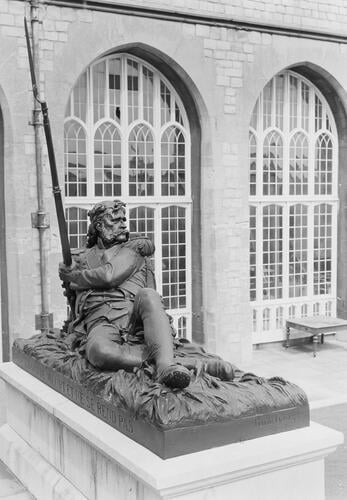
Lord Ronald Sutherland Gower (1845-1916)
La garde meurt et ne se rend pas 1876
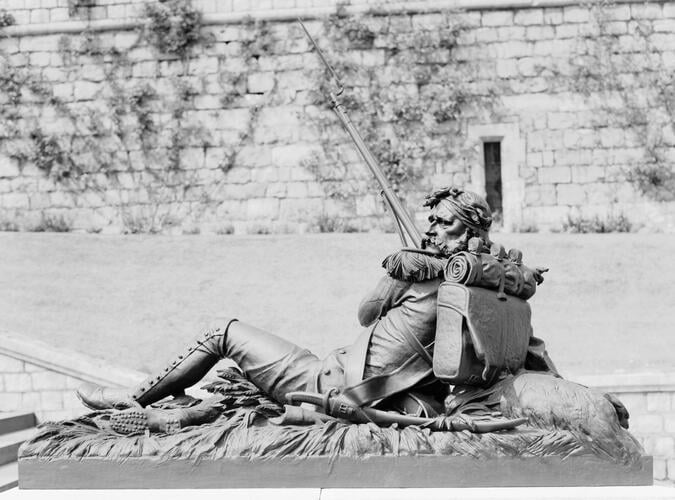
Lord Ronald Sutherland Gower (1845-1916)
La garde meurt et ne se rend pas 1876
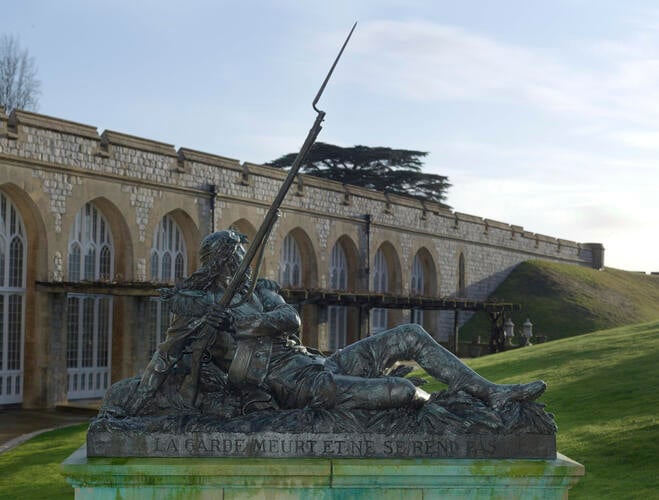

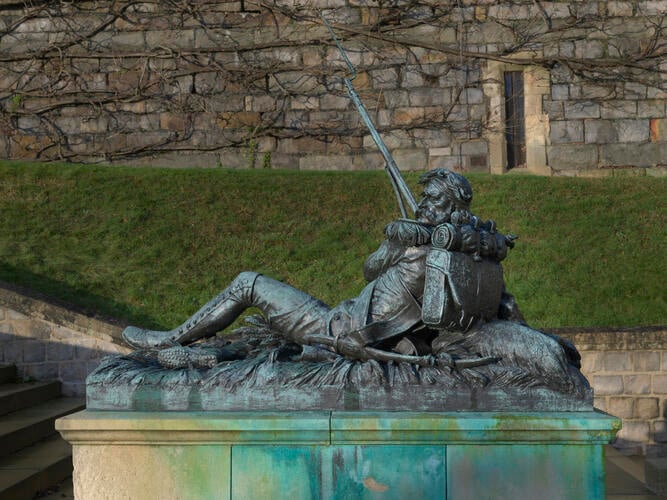
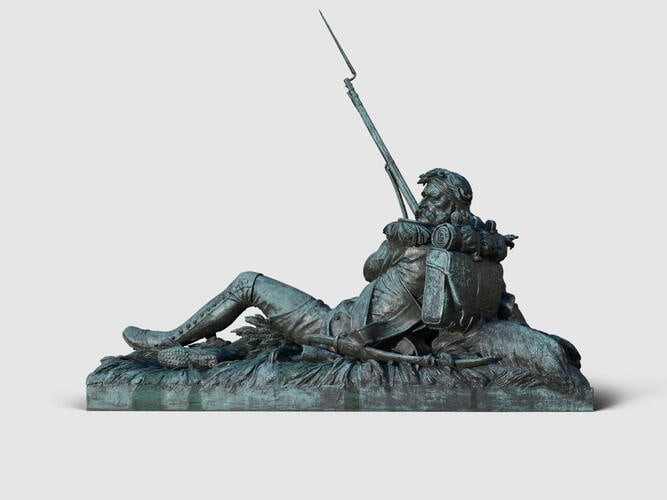



-
This bronze statue of a wounded soldier was presented by the artist, Lord Ronald Sutherland Gower, to Queen Victoria in 1890. It represents a French soldier of the Imperial Guard at the battle of Waterloo. Inscribed on the side of the base are the words – attributed to General Cambronne – with which the Imperial Guard responded to British requests that they should surrender La garde meurt et ne se rends pas (the Guard dies but does not surrender).
The wounded guard is shown in a recumbent position, holding on to his musket which he keeps raised by his left side. It has been suggested that Gower was inspired by the classical statue of 'The Dying Gaul', in the Capitoline Museum, in particular for the position of the guard's legs.
Gower trained and worked in Paris in the studio of the French sculptor and decorator Albert-Ernest Carrier-Belleuse, before setting up his own studio. He produced a number of public and private commissions, mainly of prominent historical figures.
This bronze statue dates from 1876, the year before Gower's first exhibition at the Royal Academy. It was cast by the Parisian founders Thiebaut & Fils. It was first placed in the Orangery at Windsor Castle and then it was moved to the East Terrace in 1906.Provenance
Presented to Queen Victoria 1890: on the East Terrace, Windsor Castle since 1906.
-
Medium and techniques
Bronze
Measurements
184.0 x 204.0 x 69.9 cm (whole object)
Category
Object type(s)
Alternative title(s)
The Old Guard
Place of Production
Paris [Île-de-France]